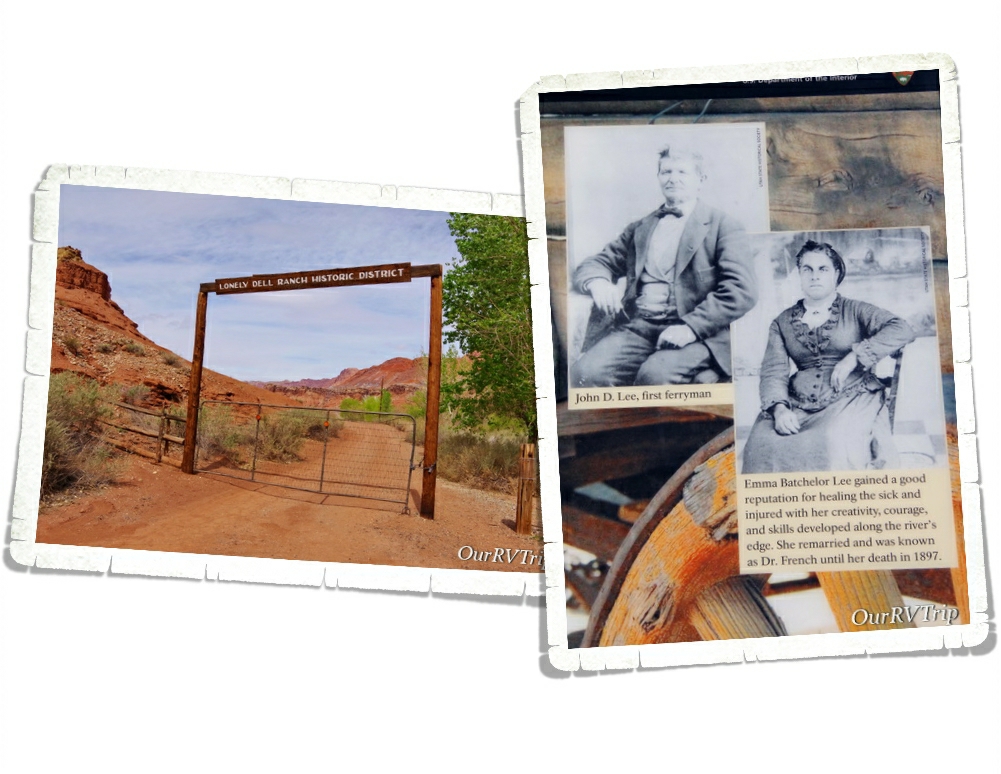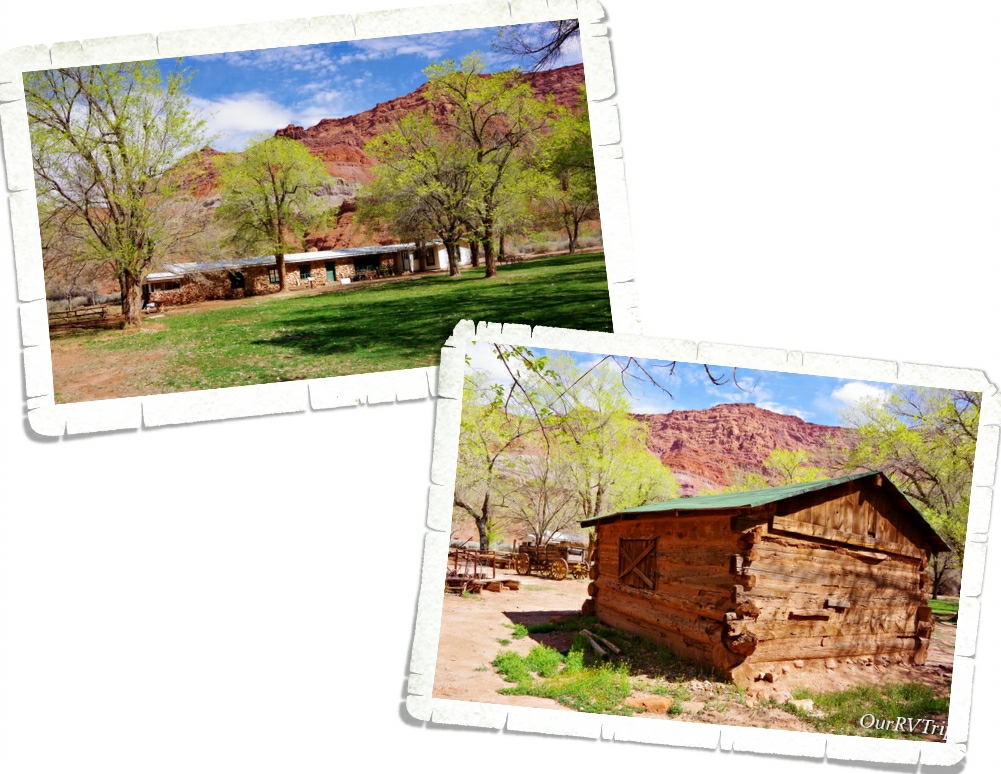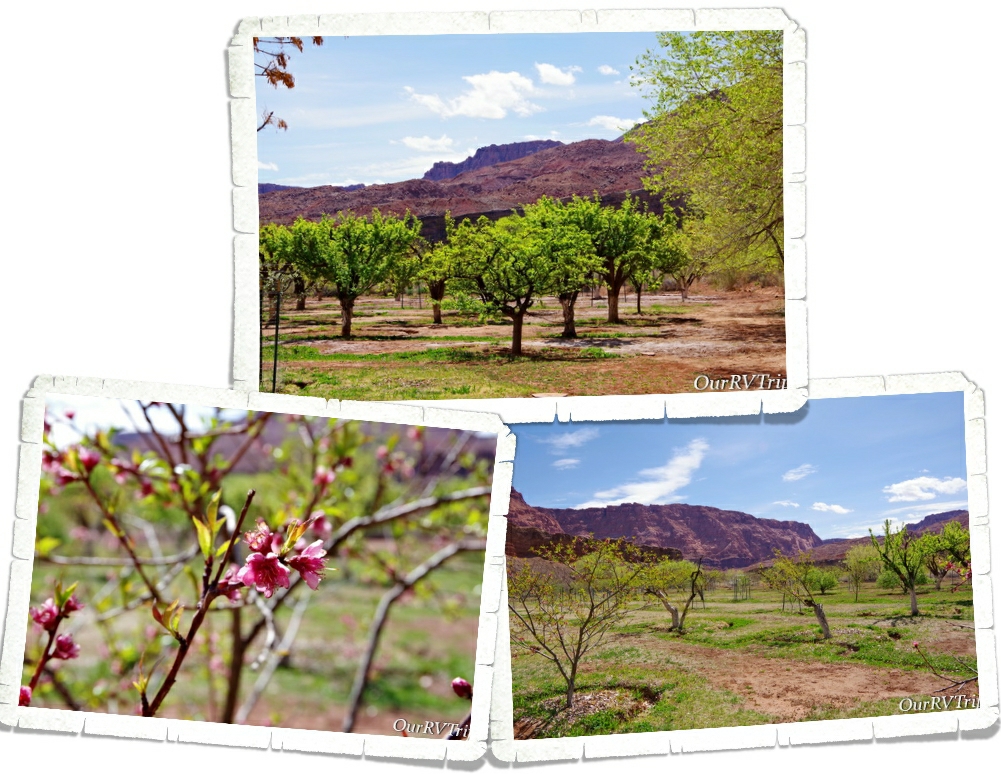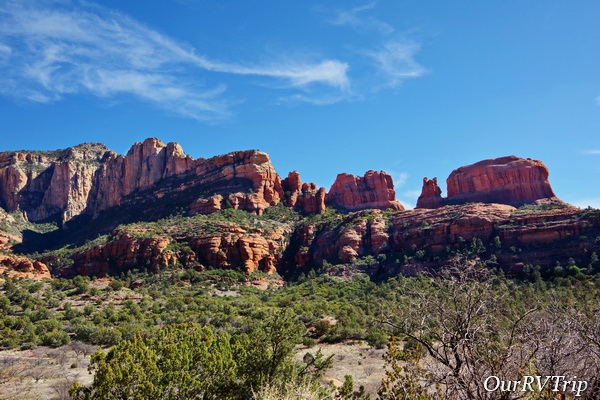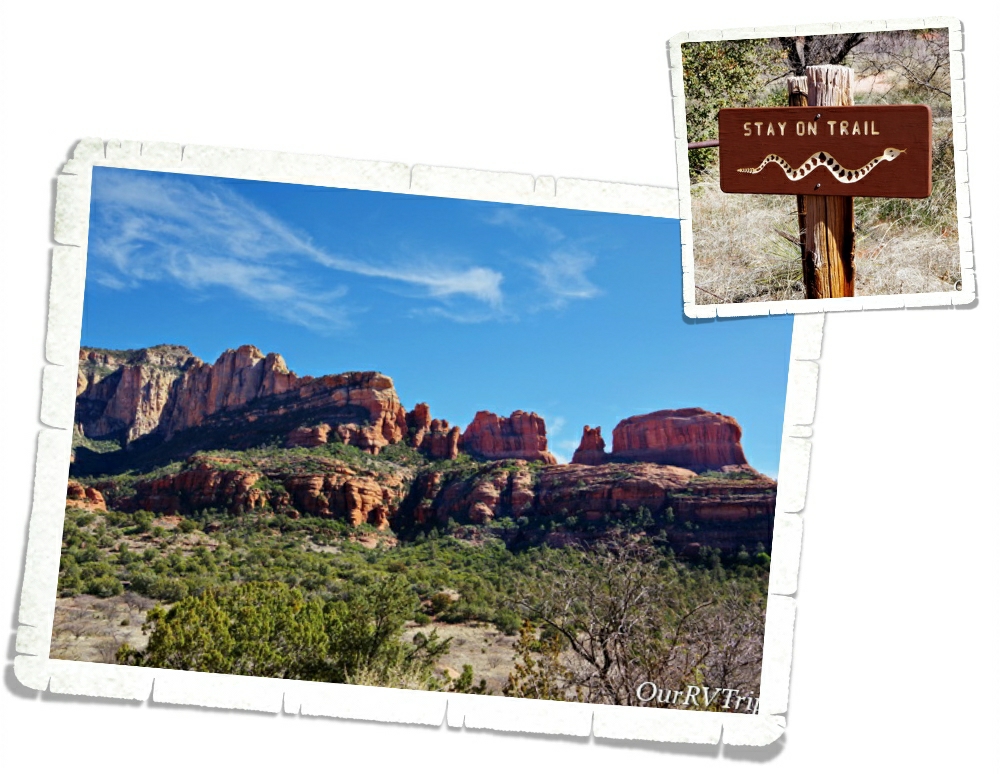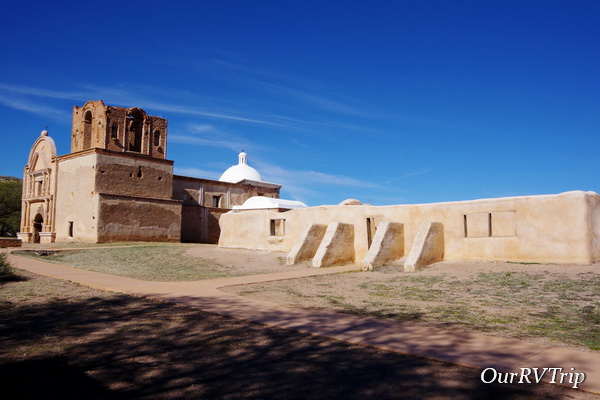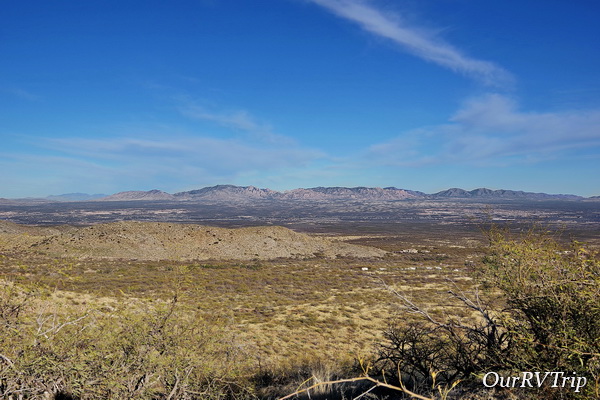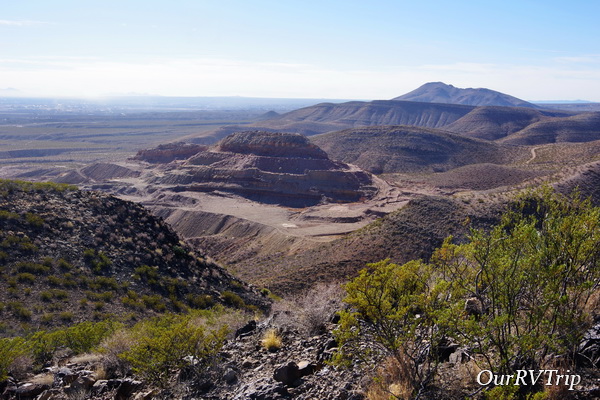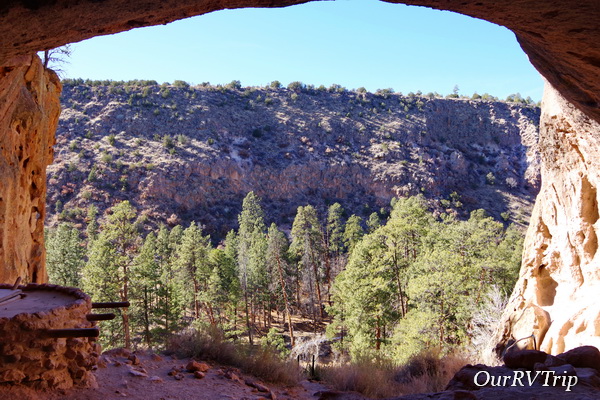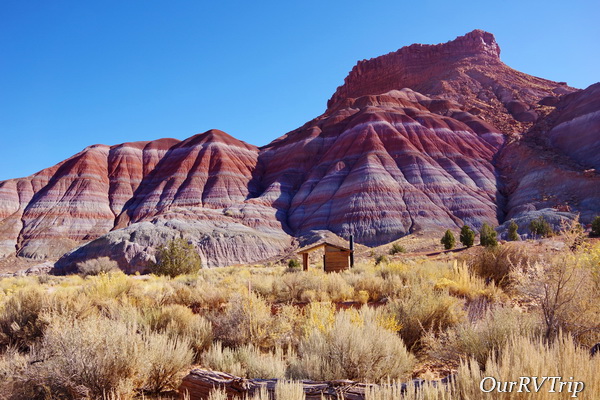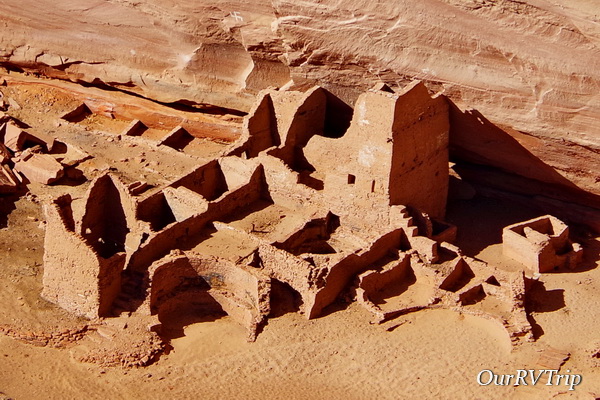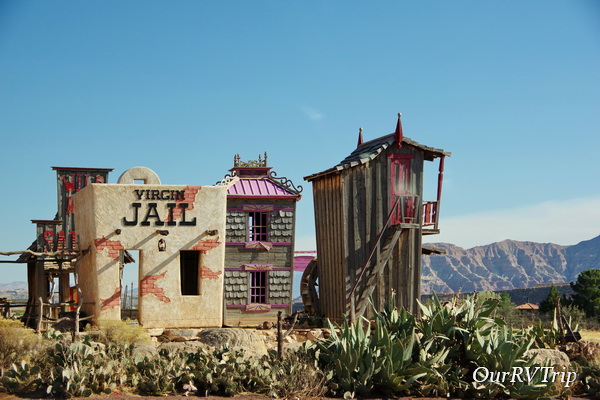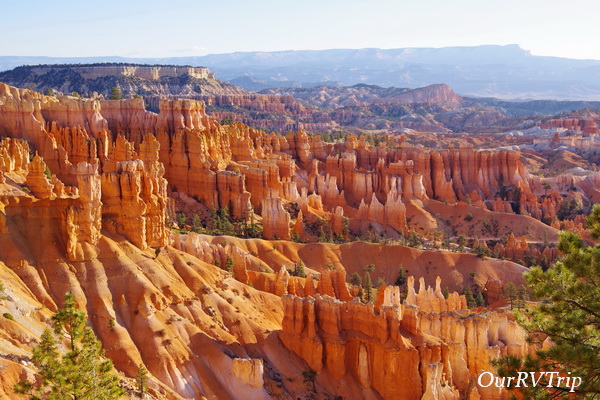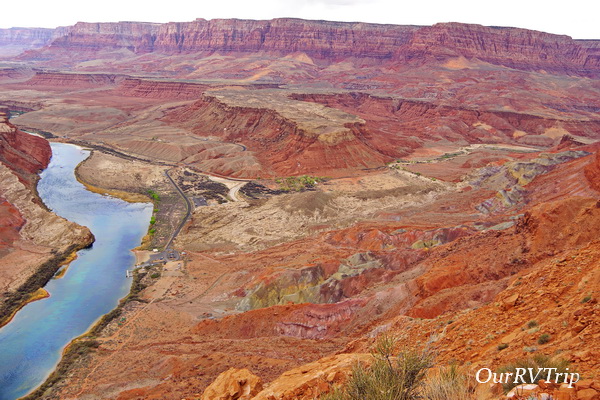
Page, AZ: Take Two
Hey Guys! After two months of sitting still in Camp Verde, AZ…we’re on the move again! I have to admit, it feels very uncertain this time. We’re in the thick of the whole Corona Virus thing and at this point it’s making us second guess and doubt everything we’re doing/not doing.
We’d already called ahead to our next RV Park to make sure it was open and that we would be allowed in. We keep hearing about other fulltime RV families who are struggling to find a place that they can stay. State parks, federal campgrounds, BLM land, and county parks are all closing down and kicking people out. Private parks are starting to either close down or refuse any new arrivals. It’s a stressful time for everyone, but being a nomad has a bit of extra stress to it now. We don’t have a sticks-n-bricks home we can go to and hunker down in until this all blows over. So, for now, we’re moving forward and trying to make due…and not stress too much.
On our way to Page, we passed through the snowy town of Flagstaff and made our way back to the high desert region. It was neat to watch all of the geographical changes that came with that.
This wasn’t our first visit to Page. In fact, we’d been there just a few months before. There are so many things to see and do in Page…some great views and some awesome hikes. I had an entire list of things to see and do while we were back in Page, but due to the virus…pretty much everything was closed.
We usually move spots on Saturdays and then go adventuring on Sundays. Jerl went to the grocery store early Sunday morning to see what we were going to be dealing with on the food/necessities problem that the country had been dealing with. The little grocery store in Camp Verde had been struggling to keep up with it all. We wanted to assess the situation in our new spot to see if we needed to go back to Camp Verde and stay longer. Jerl was surprised to see that pretty much all of the isles were decently full…except the paper isles. He also had the chance to talk to a couple of policemen who were there to protect the delivery truck (I never thought I would be typing that kind of sentence…I mean…police protection for a regular ol’ delivery truck?) Anyway, Jerl asked the police officers if hiking was allowed in Page at that time and they both encouraged us to go have a great hike and get some fresh air…while staying away form anyone that looks sick.
With the police officer’s approval, we headed out to do a little social distancing on a hiking trail. I had a few things on my list that we could hit all in one day and luck would have it…they were all still open. The first spot we hit was the Navajo Bridge. Did you know that there are only seven land bridges across the Colorado River for around 800 miles? Before the Navajo Bridge was built, travelers had to go several hundred miles out of the way to get across the Arizona/Utah border. Can you imagine having to do that with a horse and buggy? That would add weeks to a trip.
Guys, look at the color of that water! We stood on that bridge way longer than we’d planned.
The original bridge opened in 1929 and was called the Grand Canyon Bridge, but in 1990…there was a need for a newer and wider bridge. So now, the old bridge (on the right) is open to pedestrian use only while the new bridge (on the left) is open for everything else. These two bridges are tied in ninth spot for highest bridges in the US.
I knew from my research that California Condors call the area around Page home, but we didn’t expect to actually see any. We found four of them hanging around the Navajo Bridge! Did you know that you can look up the California Condor numbers and find out where they were born and what their family lines are?!
Lonely Dell Ranch and Lees Ferry are both part of the Glenn Canyon National Recreation Area. We had planned on visiting the area the last time we were in Page, but simply ran out of time. I’m so glad we got to visit during our second visit to the area!
For a long time, the Colorado River was a major obstacle while traveling between Utah and Arizona. At one spot, where the Paria River runs into the Colorado River, there’s an area where the cliffs aren’t quite as impassible and the Colorado River isn’t rushing with rapids. It’s here, at this spot where the Utah Territorial Governor, Brigham Young, sent John Lee to set up and operate a ferry.
So, in 1872 John Lee loaded up two of his families and headed out to make a life as a ferryman. Some people say he was sent there to hide from the authorities due to his part in the Mountain Meadow massacre and the slaughter of over one hundred pioneers from Arkansas who were passing through the Utah territory in 1857.
Lee spent the first few years building homes for his family and a ferry to cross the river. Since the area was so remote, the family had to be completely self-reliant. They needed to grow their own food and set up irrigation for not only household use, but to water their crops. There’s still an orchard there that you can walk though and pick some ripe fruit as you’re exploring the ranch. In 1874, the law caught up with Lee and executed him. His wife, Emma, ran the ferry until 1879 when the LDS church bought it from her and sent a new family to run it.
If you go on past the ranch, you can see remnants of the people who once made Lonely Dell Ranch their home. Over the years, LDS members continued to run the ferry and the ranch was expanded to include different families and community members.
The trail goes for quite a ways…but, this wasn’t the trail we’d come for so we headed back after a mile and a half or so. I wish we’d had a few more days to explore here. We would have loved to continue on this trail. The area was gorgeous!
In the early 1900s the gold rush hit southern Utah/northern Arizona and miners ascended on Lees Ferry. One of them was Charles Spencer who led the American Pacer Company. Spencer was more of a salesman than a miner. He hauled tons of equipment up to Lees Ferry. Spencer left the area broke in 1912. He abandoned everything there when left. All that remains of his time there are a couple of stone buildings, part of a steamship and an old boiler.
Today, you can hike up the 4.4 mile Spencer Trail. The trail eventually leads to an old coal mine. This trail climbs over 1,500 feet in less than a mile. It’s steep!
The higher we went on the trail…the better the views got. This was a rough trial…three of us only made it half way up then called it quits. The other two almost made it to the top but the trail got too dicey for them so they turned back. In the group of pictures above, you can see a shot that was taken near the top. If you look closely, you can see the Lonely Dell Ranch.
The last ferry crossing was in 1928 and it ended up sinking…killing three people. Seven months later, the Navajo Bridge opened. Now, the Lees Ferry area is mile zero for launching boat trips down the Colorado into the Grand Canyon. In the summer the beach there is lined with rafting boats and adventurous boaters prepping for trips down the mighty Colorado.
Other than our excursion to Lees Ferry and the Lonely Dell Ranch…we hung out at home. Alex got the National Park version of Monopoly for his birthday and we’ve enjoyed adding it to our collection. When we had to get out to get groceries, we found signs to tell us where to stand for social distancing while standing in line. This time in our world is truly bizarre.
We still made our weekly lunch with one of the boys happen. We got take out then found a scenic view to enjoy some one-on-one time with Nicholas. He, of course, chose pizza. Actually, we found this pizza place the last time we were in Page. It’s a great little place called Stromboli’s…if you’re ever in the area, do yourself a favor and go grab some cheese sticks and pizza! They have the best cheese sticks at this place!!
We saw signs of Spring everywhere during our one week stay in Page. We will definitely spend more time in this area! We’ve spent three weeks there now and haven’t even scratched the surface on available activities!
That’s it for now, Guys!
See y’all down the road!
#NationalParkTour





